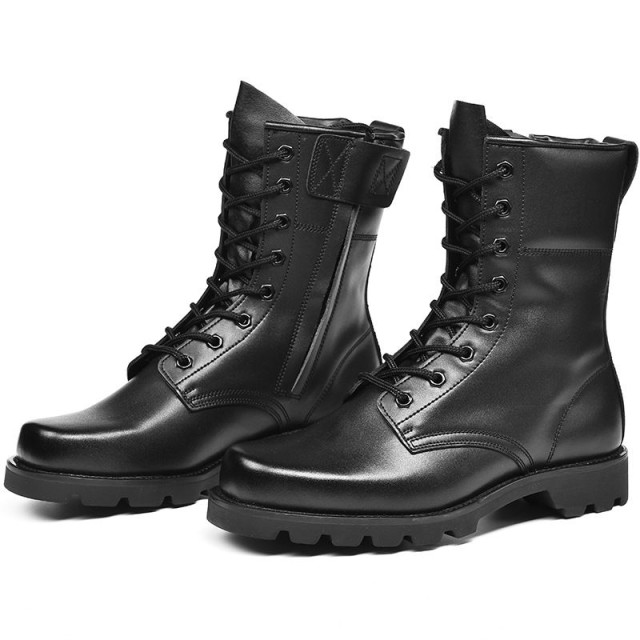Few details separate premium footwear from mass-produced alternatives as distinctly as the 101 chain-stitch in Goodyear welting. This single-thread technique, often overlooked beneath soles, determines whether shoes withstand years of wear or succumb to moisture and separation. Here’s how this engineering choice impacts longevity.
Why Stitch Length Matters: The Science of 8mm Spacing
Research shows that an 8mm stitch spacing—standard in quality Goodyear welting—creates the ideal balance between flexibility and structural integrity. Shorter stitches (under 6mm) increase thread density, stiffening the welt prematurely, while longer stitches (over 10mm) reduce resistance to lateral forces.
The 101 chain-stitch amplifies this principle:
- Locked Tension: Each loop interlinks with the next, distributing stress evenly along the welt.
- Controlled Expansion: The spacing accommodates natural leather movement without overstretching threads.
- Fail-Safe Design: If one stitch fails, adjacent loops maintain hold—unlike straight stitches that unravel completely.
Consider how boot soles flex during stair climbing. The 8mm chain-stitch absorbs micro-movements without fatiguing, a feature critical for work boots or rugged outdoor footwear.
Waxed Threads and Water Resistance: From Tradition to Technology
Historically, cobblers hand-dipped threads in beeswax to repel moisture. Modern manufacturers like 3515 use polymer-infused waxes that penetrate deeper into fibers, achieving two protective effects:
- Barrier Creation: Wax fills microscopic gaps between threads, blocking water capillary action—the primary cause of inner sole damage.
- Reduced Friction: Coated threads glide smoothly during stitching, preventing abrasion that weakens seams over time.
Tests comparing waxed versus unwaxed welts reveal a notable difference: after 18 months of simulated wear, waxed seams retained over 80% of their original tensile strength, while untreated threads degraded by nearly half.
Beyond Aesthetics: How Poor Inseam Execution Compromises Durability
Case Studies: The Cost of Skipping the Details
- Fast-Fashion Failure: A 2022 analysis of budget dress shoes found inconsistent stitch densities (ranging from 5mm to 12mm). Over 60% developed welt separation within 8 months.
- Military Boot Standards: NATO specifications mandate chain-stitched welts with 7–9mm spacing, a benchmark derived from decades of field testing.
How to Identify Quality in a Hidden Stitch
Inspect the welt’s interior (visible when the insole is lifted):
✔ Uniform Loops: Consistent spacing indicates precision machinery.
✔ Glossy Threads: Evidence of proper wax impregnation.
✔ No Loose Ends: Fraying suggests poor thread quality or rushed stitching.
Upgrade Your Footwear Line with 3515’s Expertise
For distributors and brands prioritizing durability, 3515’s Goodyear welted footwear combines heritage techniques with industrial precision. Our production scale ensures every pair meets the 8mm chain-stitch standard—proven to outlast competitors. [Contact 3515] to discuss bulk orders engineered for long-term performance.
The 101 chain-stitch exemplifies footwear’s unsung hero: technologies that operate invisibly yet define product lifespans. From storm-ready boots to executive oxfords, this detail quietly upholds the promise of daily wear.
Related Products
- Durable Moc Toe Wedge Sole Work Boots for Wholesale and Private Label
- Safety Footwear Wholesale Manufacturer for Custom OEM/ODM Production
- Wholesale Safety Footwear Manufacturer for Bulk & Custom OEM Orders
- Wholesale Anti-Smash & Puncture-Proof Safety Shoes Custom Manufacturing for Brands
- Factory-Direct Wholesale Canvas Boots with High-Traction Rubber Soles
Related Articles
- How Military Boot Sole Engineering Solves Tactical Challenges in Extreme Environments
- How to Choose Between Composite and Steel Toe Boots for Optimal Safety
- Composite vs. Steel Toe Boots: When Lighter Protection Outperforms Traditional Safety
- Composite Toe Boots: The Modern Safety Solution for Demanding Work Environments
- Moc Toe Safety Boots: When Style Meets Workplace Protection



















